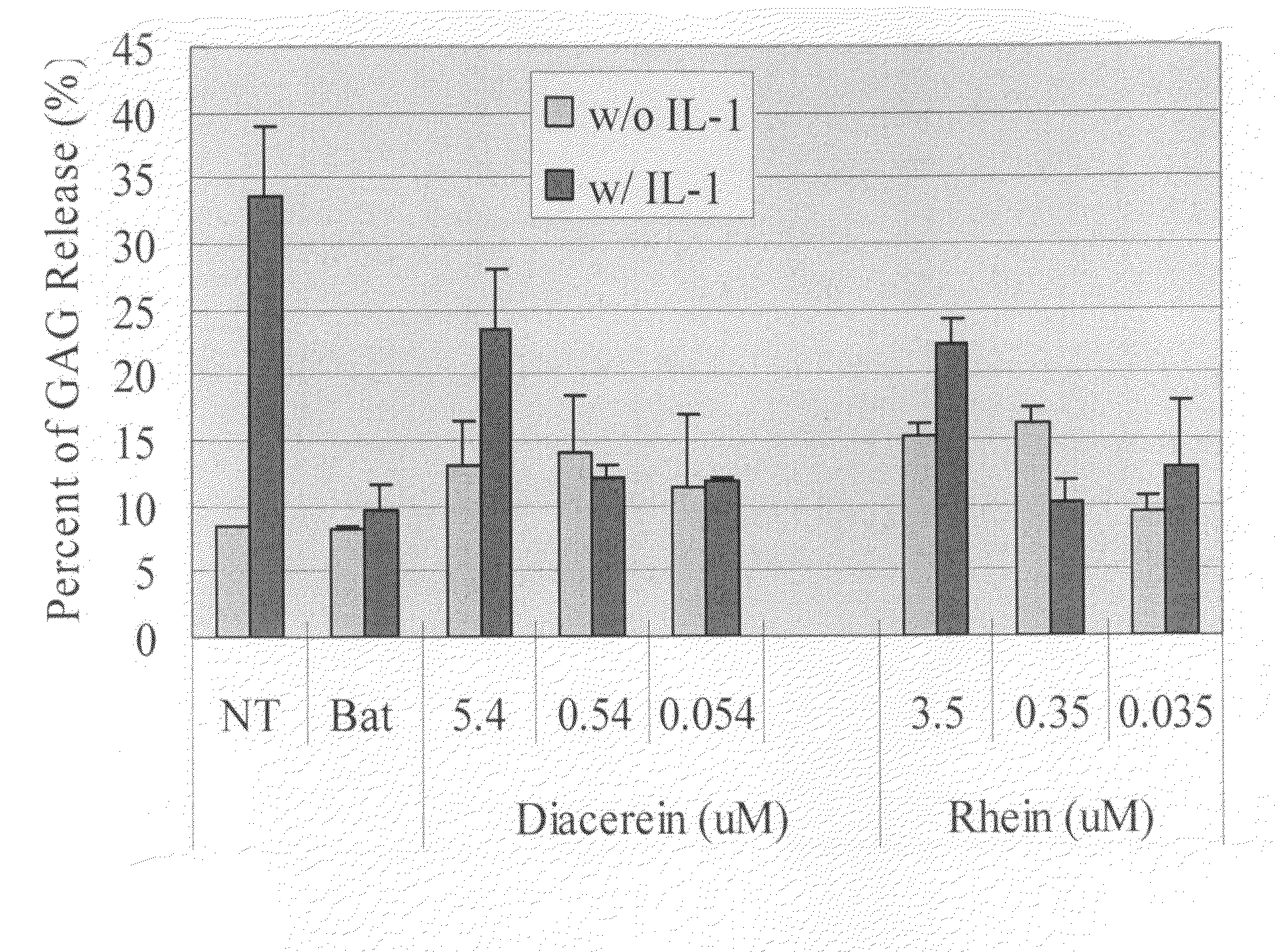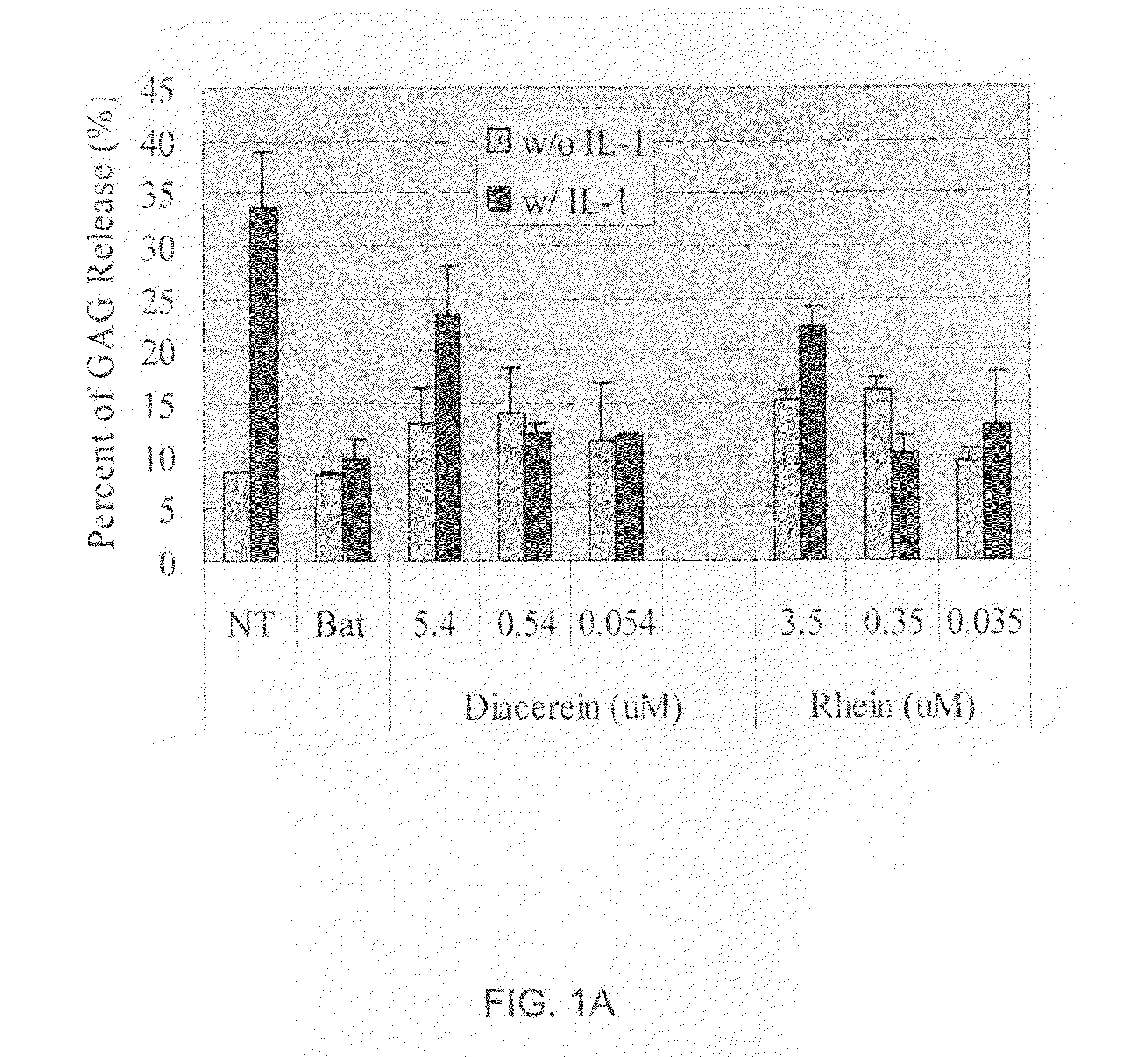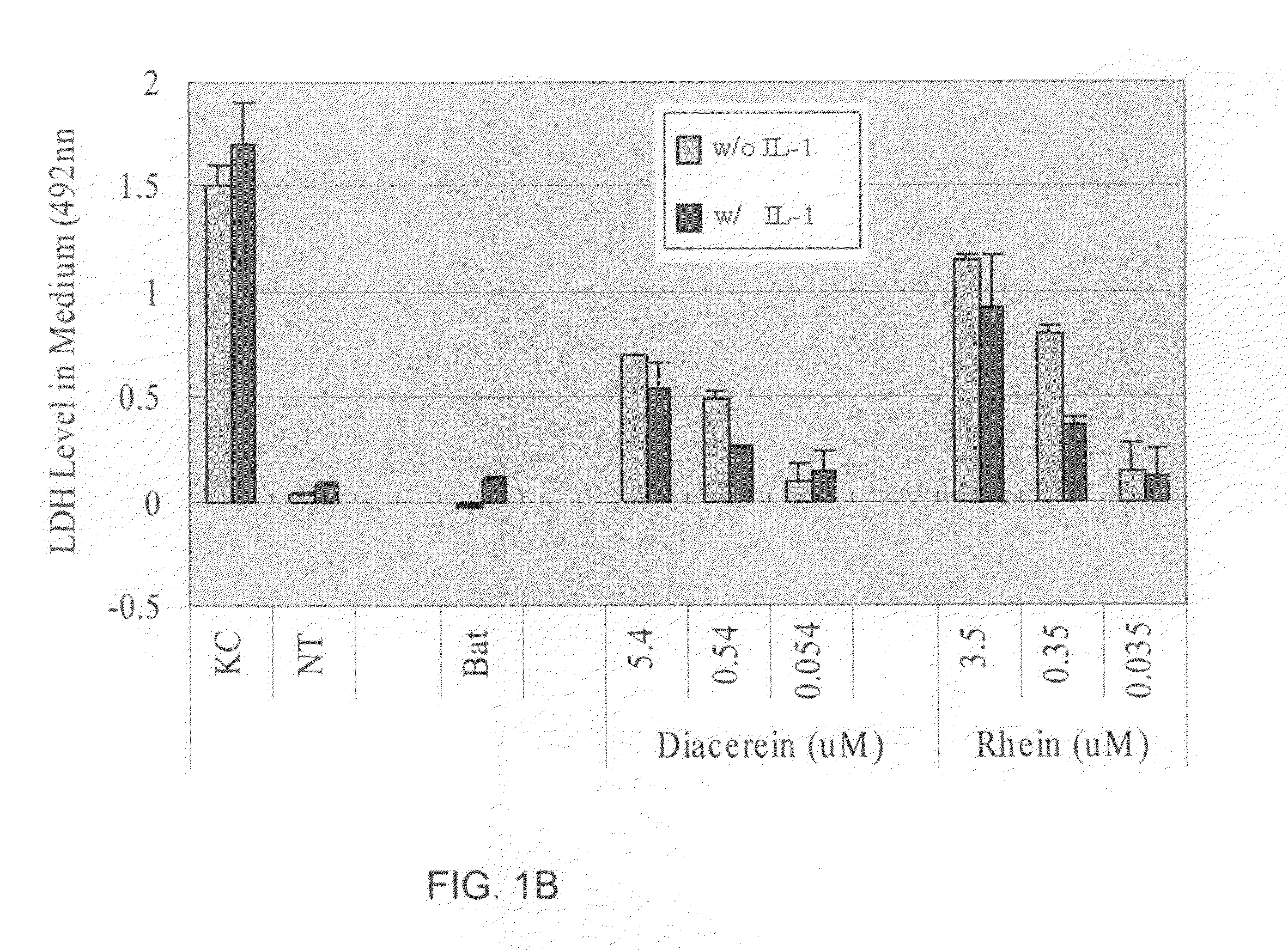Trans-capsular administration of p38 map kinase inhibitors into orthopedic joints
a technology of kinase inhibitors and p38 map, which is applied in the direction of antibody medical ingredients, peptides/protein ingredients, peptides, etc., can solve the problems of increasing the wear of hyaline cartilage, reducing the effectiveness of other agents, and reducing so as to reduce the pain attributed to irritation of these nerves, the effect of reducing the effectiveness of those other agents
- Summary
- Abstract
- Description
- Claims
- Application Information
AI Technical Summary
Benefits of technology
Problems solved by technology
Method used
Image
Examples
example i
[0380]This non-limiting prophetic example describes how to administer transcapsularly a formulation comprising an agent, such as a p38 MAP kinase inhibitor, and saline into the synovium of a degenerating joint or capsule.
[0381]Optionally, the clinician uses a diagnostic test to verify that a particular joint has high levels of a particular pro-inflammatory cytokine, such as p38 MAP kinase, in excess of normal levels.
[0382]Next, the clinician provides a local anesthetic (such as 5 ml lidocaine) to the region above the joint of concern to reduce subcutaneous pain.
[0383]Next, the clinician punctures the skin of the patient above the joint of concern with a relatively large (e.g., 18-19 gauge) needle having a stylet therein, and advances the needle through subcutaneous fat, ligaments and muscles to the outer edge of the capsule.
[0384]In the case of antagonist injections, the clinician may aspirate a volume of synovial fluid before injection.
[0385]Next, the stylet is removed from t...
example ii
Sustained Release
[0389]This non-limiting prophetic example is substantially similar to that of Example I, except that the formulation comprises a sustained release device comprising the co-polymer poly-DL-lactide-co-glycolide (PLG). In one example, the formulation contains infliximab as the antagonist, and has an infliximab concentration of between about 30 mg / ml and about 60 mg / ml. In another embodiment, the formulation contains a p38 MAP kinase inhibitor at a concentration of about 100 nanograms / ml. In another embodiment, the p38 MAP kinase inhibitor is administered in a dose of 50 μg / kg.
example iii
Chondrocyte Pellet Culture Model
[0390]Cytokines, such as IL-1β, have significant effects on matrix molecule expression by articular chondrocytes, decreasing type II collagen and aggrecan expression. In addition, such cytokines also have effects on apoptosis, inducible nitric oxide (NO) synthase expression, and matrix metalloproteinase expression. Cytokines also blunt chondrocyte compensatory synthesis pathways required to restore the integrity of the degraded extracellular matrix (ECM). The inventors have demonstrated herein that, in the presence of IL-1β, a chondrocyte pellet undergoes proteoglycan degradation that mimics in vivo the osteoarthritis (OA) condition. This process was fully inhibited by the presence of aggrecanase inhibitors such as batimastat and this model was successfully used for screening aggrecanase inhibitors and other agents.
[0391]A chondrocyte pellet culture model was developed for in vitro high throughput screening of therapeutic compounds for inhibition of I...
PUM
 Login to View More
Login to View More Abstract
Description
Claims
Application Information
 Login to View More
Login to View More - R&D
- Intellectual Property
- Life Sciences
- Materials
- Tech Scout
- Unparalleled Data Quality
- Higher Quality Content
- 60% Fewer Hallucinations
Browse by: Latest US Patents, China's latest patents, Technical Efficacy Thesaurus, Application Domain, Technology Topic, Popular Technical Reports.
© 2025 PatSnap. All rights reserved.Legal|Privacy policy|Modern Slavery Act Transparency Statement|Sitemap|About US| Contact US: help@patsnap.com



